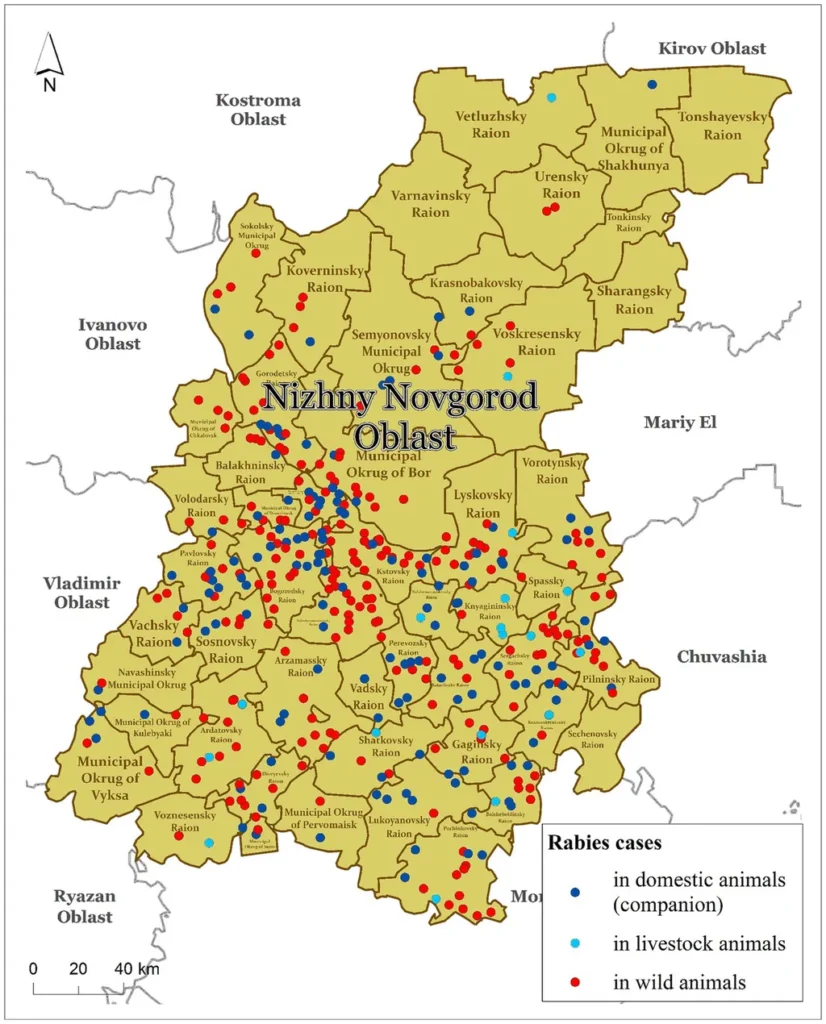In the vast expanses of the Russian Federation, a silent battle has been waging for decades, pitting scientists and veterinarians against an insidious foe: rabies. A recent study, published in the journal ‘Ветеринария сегодня’, has shed new light on the trends, patterns, and influencing factors of this disease, offering hope for a future free from its grip.
Rabies, a viral disease that is almost always fatal once symptoms appear, has long been a scourge in the Russian Federation, with wild and domestic animals consistently reporting high incidence rates. The primary culprits? Red foxes, which act as the biological reservoir for the Lyssavirus rabies strain. The ecology and behavior of these foxes determine the spatial spread of the disease, its seasonal patterns, and the species involved in the epizootic cycle.
The study, led by A. M. Gulyukin of the Federal Scientific Centre VIEV, analyzed 35 years of monitoring data to understand the determinants and patterns of the current disease situation. Using a combination of database management systems and geoinformation systems, the researchers aggregated data on rabies outbreaks, vaccination among wild animals, and natural and agricultural zoning. This data was then visualized as vector map layers within a GIS thematic project, allowing for a comprehensive spatial analysis.
The results were revealing. The current rabies distribution area covers most of the Russian regions, with the area of persistently high incidence primarily encompassing the forest-steppe, mixed forest, and broadleaf forest biomes of the East European Plain. The maximum number of rabies cases is reported among foxes, with the disease exhibiting spillover effects, leading to active transmission among multiple domestic animal species. The primary risk group involves dogs, cats, and cattle, a fact that has significant implications for the agriculture sector.
“The observed decline in rabies incidence across the Russian Federation has not been accompanied by a proportional reduction in the disease’s geographic distribution,” Gulyukin noted. This underscores the need to modify current control measures and implement a comprehensive program for the complete elimination of circulating Lyssavirus rabies strains from infected ecosystems.
The study’s findings have significant implications for the agriculture sector. Rabies outbreaks can lead to substantial economic losses due to the death of livestock, reduced productivity, and the cost of control measures. Moreover, the psychological and emotional toll on farmers and their families can be immense. The study’s emphasis on the need for comprehensive control measures and the complete elimination of the disease offers hope for a future where these losses are a thing of the past.
The research also highlights the importance of spatial analysis and geoinformation systems in understanding and controlling disease outbreaks. By visualizing data and analyzing spatial patterns, scientists can gain a deeper understanding of the factors driving disease spread and develop more effective control strategies.
As we look to the future, the study’s findings offer a roadmap for the complete elimination of rabies in the Russian Federation. By building on the success of oral rabies vaccination programs and implementing comprehensive control measures, we can hope to see a future where this disease is no longer a threat to our wildlife, our pets, or our livestock. The battle against rabies is far from over, but with studies like this, we are one step closer to victory.

